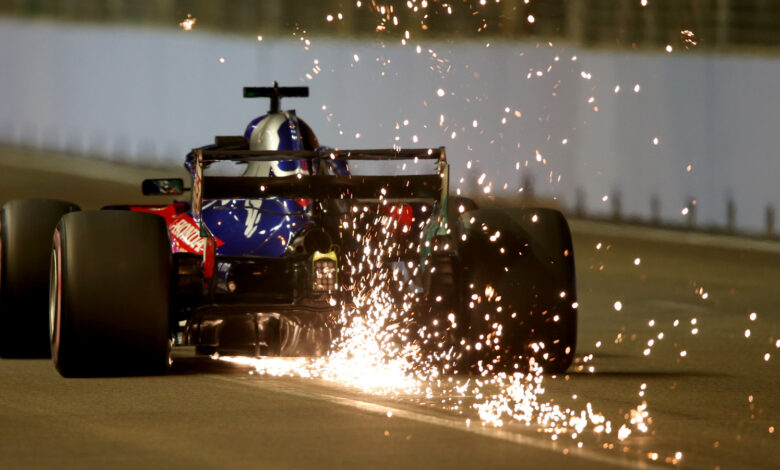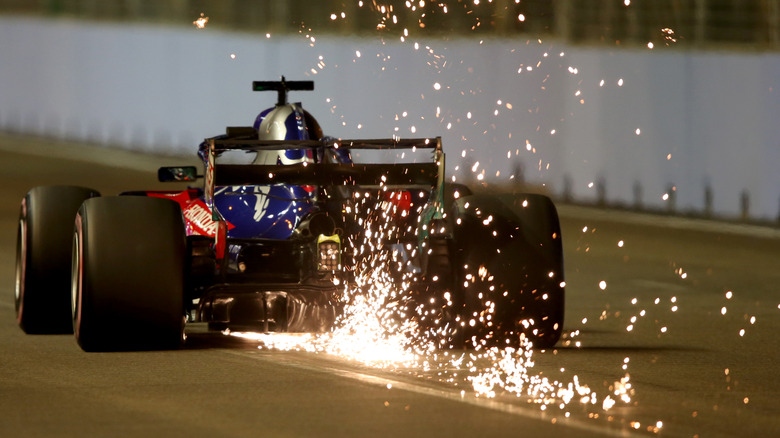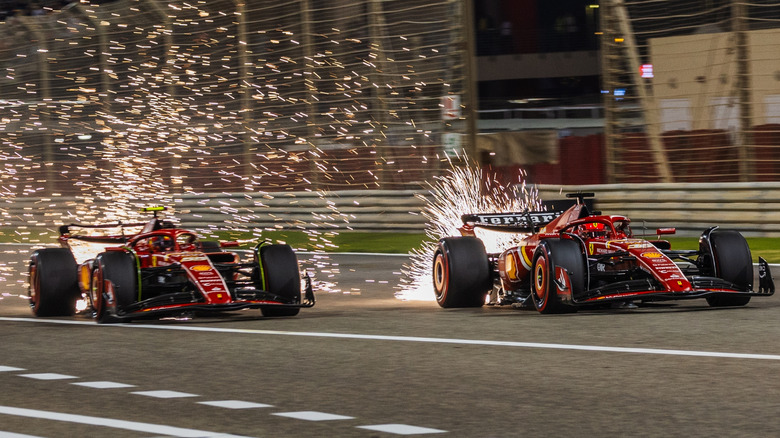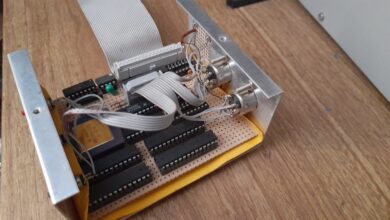Why Do F1 Cars Spark On The Track?


Charles Coates/Getty Images
While watching a Formula 1 race, you may have noticed sparks flying underneath the cars, especially on straights. This doesn’t mean the car is going too fast or getting damaged on the track — it actually means the opposite. Each F1 car has a wooden plank called a skid block that runs under the car from the front wheels to the back. This wooden plank must be a certain thickness,and most teams opt to also add titanium plates in certain areas to protect the wooden plank from hitting the ground. When Formula 1 cars generate a lot of downforce, these plates come into contact with the track, especially where the surface is uneven.
Advertisement
The contact between the metal skid blocks and the asphalt creates the sparks viewers see. Like the mandatory protective halo that was implemented in 2018, the skid block entry in the Formula 1 rulebook was written with safety in mind. Skid blocks were originally introduced in 1994 and were brought back in 2015 to ensure that Formula 1 cars ride at a certain height from the track. This measure was put into place to limit speeds after Ayrton Senna’s fatal accident at the San Marino Grand Prix.
Are the sparks damaging the F1 cars?

Jay Hirano/Shutterstock
When you see sparks flying on the highway, it usually means a car is getting damaged from contacting the road. This is especially common with heavily modified slammed cars and the lowest of low riders. Formula 1 cars are not getting damaged when you see sparks on the race track — instead, these sparks mean the car is getting protected from damage. However, a car that’s too low and damaging the skid block too much can lead to disqualification. Current regulations state that the plank be 10 millimeters thick throughout, with wear of 1 millimeter allowed during the race.
Advertisement
In 1994, Michael Schumacher became the first driver to be disqualified for his skid block measure for excessive wear after a race, costing him his victory at the Belgian GP. Jarno Trulli lost his fourth place finish at the 2001 United States Grand Prix, although he later successfully appealed this disqualification. Lewis Hamilton topped our rankings of the greatest drivers in F1 history, but he and Charles Leclerc were disqualified from the U.S. Grand Prix in 2023 for skid block wear violations. So while it’s okay to see some sparks flying during a Formula 1 race, an excessive shower of glowing metal may mean a driver’s points-scoring finish is about to be wiped from the record book.



